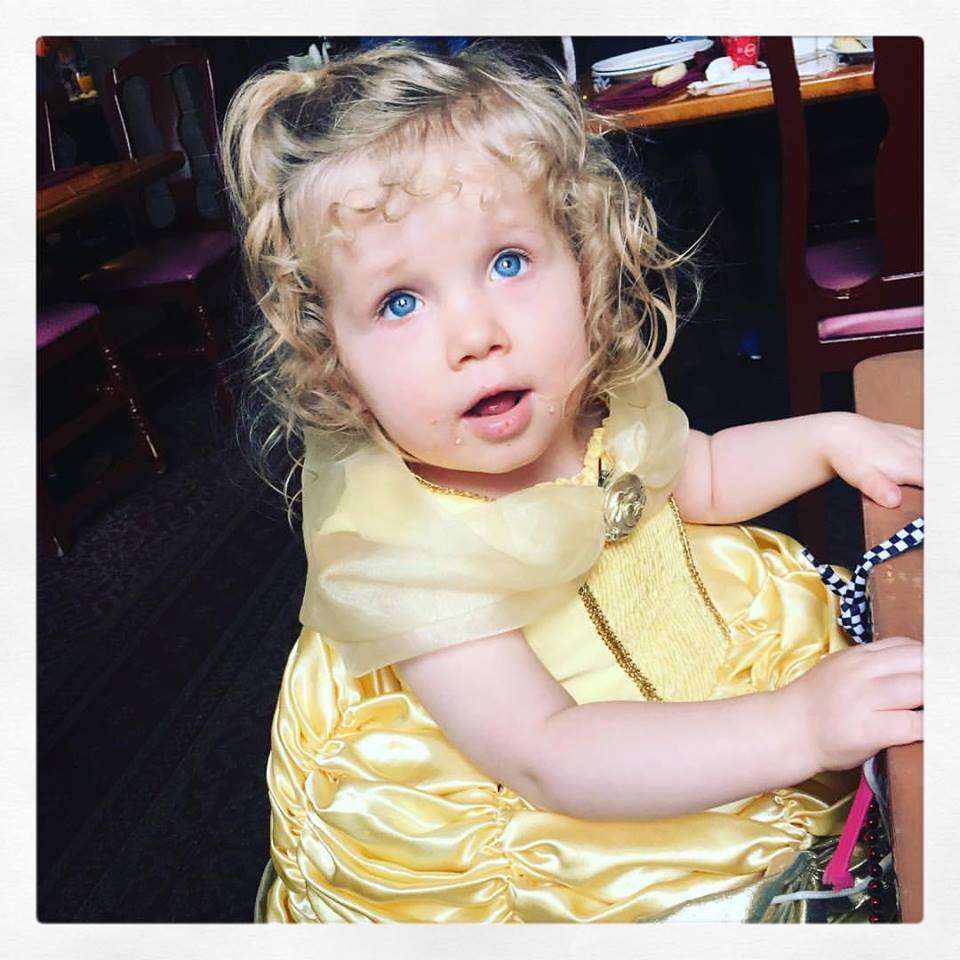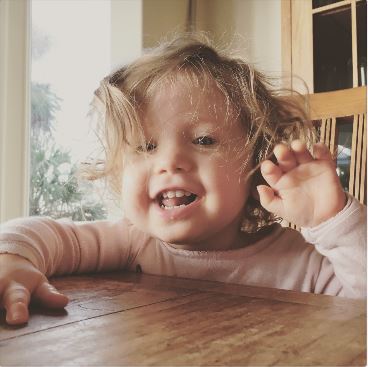Meet Zella
|
Zella’s Journey to Diagnosis
Zella was born on December 23rd of 2014. The youngest of four children and the daughter of a pediatrician, as a newborn we assumed Zella would be just like our other three kids. At her three month visit, however, Zella’s pediatrician was concerned that although she would look at us, she didn’t really “regard” our faces in detail. Zella also seemed to have mild nystagmus (eye shaking), especially when trying to focus on objects further in her left or right field of vision. We were immediately sent for an abdominal ultrasound to rule out masses from possible neuroblastoma, an MRI of her brain, and a follow up with a pediatric ophthalmologist to check out her vision. Zella’s abdominal ultrasound was negative for masses and her MRI was negative for neuroblastoma, but what doctors found in the MRI wasn’t exactly good news. The MRI showed ventricular widening (not caused by hydrocephalus), the presence of an arachnoid cyst on one side of her brain, and white matter loss. A follow-up MRI done at a year would later reveal thinning in Zella’s corpus callosum. We were shocked. Our visit to the ophthalmologist at 4 months resulted in a diagnosis of “isolated foveal hypoplasia,” a vision disorder only found in people with aniridia (absence of the iris) or albinism. Zella clearly had neither disorder and so we added this to our growing list of concerns. Next up was a visit to a developmental pediatrician at Vanderbilt. Zella was incredibly stiff as an infant. In order to change her diaper, you essentially had to lift her entire body up by her feet because there was no way you could bend her in half at the waist. This hypertonia plus a few other symptoms was what lead the developmental pediatrician to give Zella a preliminary diagnosis of Cerebral Palsy. At six months Zella began physical therapy at home through the “Babies Can’t Wait” early intervention program in Georgia. She had gone from hypertonic to completely hypotonic and floppy, making me wonder if we were dealing with some type of muscular dystrophy. We quickly added occupational therapy, followed by a second weekly physical therapy session, and then later two speech therapies a week. Zella also added subspecialist physicians to her provider list --- a geneticist in Charleston, a full three hours from our home in Augusta, Georgia, an endocrinologist, another developmental pediatrician at Duke University, and an ENT. Our geneticist ran a couple of single gene tests using Zella’s very rare eye condition as his guide. Those tests came back negative, however, and then it was back to the drawing board. In April of 2016 when Zella was 16 months old our geneticist told us he wanted to go ahead and do whole exome sequencing, and we agreed that it would be our best chance at determining whether her condition was indeed genetic. Six weeks after submitting all of our blood samples to GeneDx for the sequencing, my husband received a phone call from the genetic counselor. She told him they had an answer that connected all of Zella’s seemingly unrelated array of symptoms. Again, we were shocked. Since Zella’s diagnosis with ADNP syndrome she has also officially been diagnosed with autism. We are so thankful to finally name her condition so that our family can connect with other families in this journey together to raise ADNP warriors. |









